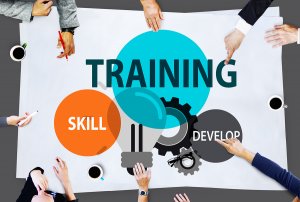 In today’s fast paced business environment it is vital that we keep up to date and this often means that we have to learn new skills.
In today’s fast paced business environment it is vital that we keep up to date and this often means that we have to learn new skills.
Many people have good intentions when it comes to developing themselves, but then decide that learning how to do something new is simply too difficult or too time consuming for them to pursue. This does not need to be the case.
Accelerated learning techniques are designed to overcome the two biggest barriers to effective learning: excessive stress and remembering what you have learned.
Accelerated learning techniques therefore emphasise positive reinforcement of your natural learning abilities, help to reduce your stress and anxiety and use multi-sensory input to increase your retention of information.
The techniques of accelerated learning are not the work of a single person, many research psychologists and professional educators have, over the years, contributed to this modern way of learning.
Whilst there are many accelerated learning techniques, the following five methods are particularly useful when learning a new business skill.
1. Set yourself small, measurable goals
One of the keys to improving your learning capability is to break down all of your ambitions into small, measurable and achievable goals.
Many delegates confuse ambitions and goals. “Learning how to be an effective manager” is an ambition. It is something that all newly promoted managers aspire to be, but it is not a goal.
The ambition is a worthy one, but it is too big and too vague. It is known that we are more motivated to take action when set ourselves specific, achievable goals.
By breaking this ambition down, we might set ourselves the more achievable and measurable goal of “Learn the five steps of effective delegation”.
2. Use mind maps
A mind map is a diagram in which information is represented visually. Usually a central idea is placed in the middle of a large piece of paper and associated ideas are arranged around it.
Mind maps are powerful tools for enhancing the retention of new ideas and concepts. They help you to visually solve a problem, break complex things (such as an ambition) down into smaller, simpler processes. They can be used to deconstruct a complicated task – and so gain a deeper, more practical understanding of it.
3. Apply Pareto’s 80:20 rule
The Pareto principle is a rule named after the economist Vilfredo Pareto. It specifies that there is an unequal relationship between inputs and outputs and is widely used in business. For example, in selling 80% of your orders will come from 20% of your customer base. When applied to learning it states that 80% of our results will come from 20% of our work.
So in accelerated learning you should focus on the vital 20% and avoid wasting your time on the less vital 80% of the task.
4. Block out distractions and do not multi-task
Whilst it is possible for you to multi-task (doing two things at once) you cannot focus effectively on more than one thing at a time. So after you have broken your ambition into small achievable goals you should focus on one at a time.
You will learn best if you block out distractions – which is why learning away from the workplace on a training course is an effective use of time.
5. Practice as you learn
It is almost impossible to master any skill if you do not practice what you have learned. Action plans which are not acted upon are a waste of your time.
Remember that your practice does not have to be perfect. The key is to start practicing as soon as possible after learning something new.
By using the principles of accelerated learning, you can rapidly learn skills that would otherwise take months to learn.
